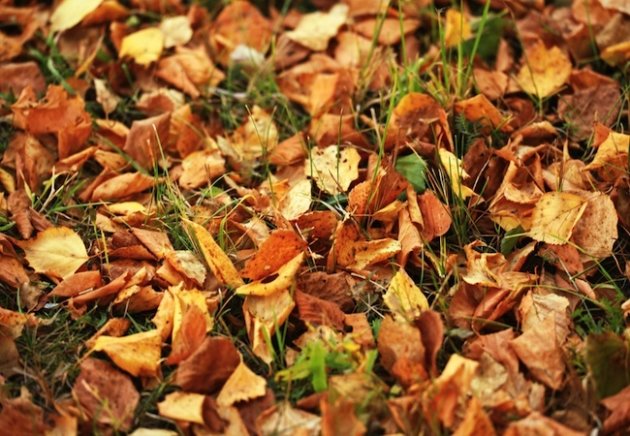 Every
year, fall reintroduces us to a raft of pleasures that we get to
experience in no other season—hot apple cider, pumpkin carving, and so
on. But fall also signals the return of one chore many of us dread: raking leaves.
As surely as the seasons change, autumn mornings witness homeowners
bent over rusty-tined rakes, endlessly scraping withered foliage onto
tarps and into heavy-duty garbage bags. Imperfect though it may be,
that's the world I've always known.
Every
year, fall reintroduces us to a raft of pleasures that we get to
experience in no other season—hot apple cider, pumpkin carving, and so
on. But fall also signals the return of one chore many of us dread: raking leaves.
As surely as the seasons change, autumn mornings witness homeowners
bent over rusty-tined rakes, endlessly scraping withered foliage onto
tarps and into heavy-duty garbage bags. Imperfect though it may be,
that's the world I've always known. Consider my surprise when I learned that, according to lawn care experts, leaf-raking is an optional exercise. Certainly, a thick layer of leaves should not be left to smother the grass growing beneath. But raking isn't the only—or even the easiest—method of protecting your lawn's health. It turns out that mulching leaves—that is, mincing them to shreds with your lawn mower—is what's best for the health of your lawn. And compared with raking, mulching leaves is much less work.
 Proceed to
mow the lawn just as if it were any other day, not the most exciting
day of your life—the day you finally break free from the tyranny of
raking. The goal is to cut the leaves into shreds that are about a
half-inch in diameter (more or less the size of a dime). As mentioned,
depending on the volume of leaves that have fallen on your lawn, it
might take more than one pass to get the shreds to the desired size.
When you're done, the leaf shreds should have fallen between the blades
of grass to reveal much of the lawn. A passerby might easily be fooled
into thinking that you had raked!
Proceed to
mow the lawn just as if it were any other day, not the most exciting
day of your life—the day you finally break free from the tyranny of
raking. The goal is to cut the leaves into shreds that are about a
half-inch in diameter (more or less the size of a dime). As mentioned,
depending on the volume of leaves that have fallen on your lawn, it
might take more than one pass to get the shreds to the desired size.
When you're done, the leaf shreds should have fallen between the blades
of grass to reveal much of the lawn. A passerby might easily be fooled
into thinking that you had raked! If when you're done you look at the shredded leaves scattered across your lawn and think, "I can't see any grass whatsoever," then do this: Reattach the bag to your lawn mower and go over the grass one last time. In the process, you'll collect a surfeit of mulched leaves that you can add either to your garden beds or compost pile. Consider mulching on a weekly basis during the height of the season so there's not enough time between mowings for a challenging amount of leaves to accumulate.
As the mulched leaves decompose, they enhance the soil with valuable nutrients that feed the microbes and worms present in any healthy lawn. Arguably, the nitrogen boost that results from mulching is such that you don't even have to fertilize in the fall. This means that compared with raking, mulching leaves isn't only easier and more lawn-friendly, but it's also less costly, saving you both the money and time spent on fertilizing. I don't think I'll ever be able to look at leaves the same way again. It’s a shame for them to sit by the curb all wrapped up in tightly knotted plastic bags when they could be gracing your grass with nourishment.

No comments:
Post a Comment